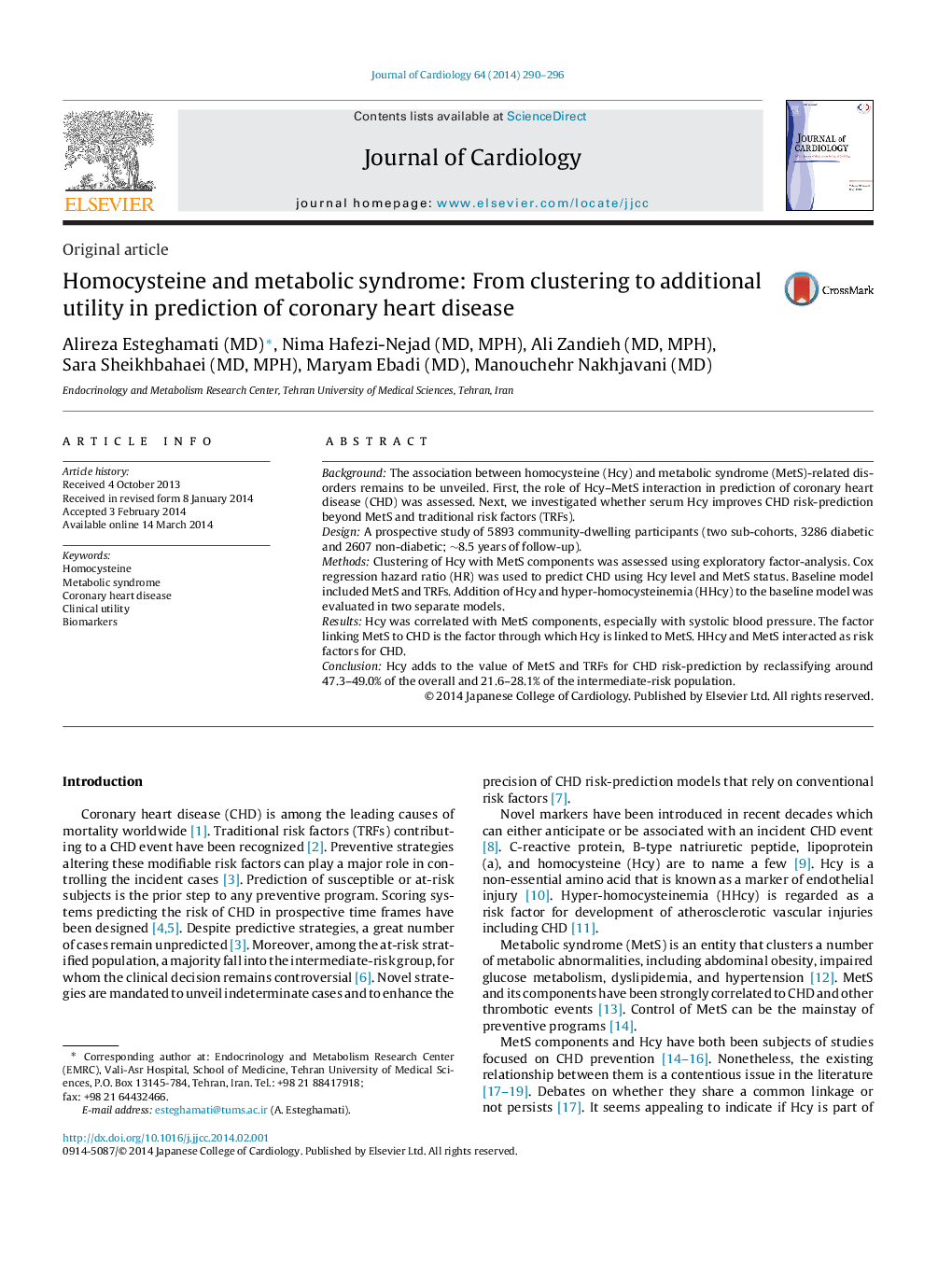| Article ID | Journal | Published Year | Pages | File Type |
|---|---|---|---|---|
| 5984254 | Journal of Cardiology | 2014 | 7 Pages |
BackgroundThe association between homocysteine (Hcy) and metabolic syndrome (MetS)-related disorders remains to be unveiled. First, the role of Hcy-MetS interaction in prediction of coronary heart disease (CHD) was assessed. Next, we investigated whether serum Hcy improves CHD risk-prediction beyond MetS and traditional risk factors (TRFs).DesignA prospective study of 5893 community-dwelling participants (two sub-cohorts, 3286 diabetic and 2607 non-diabetic; â¼8.5 years of follow-up).MethodsClustering of Hcy with MetS components was assessed using exploratory factor-analysis. Cox regression hazard ratio (HR) was used to predict CHD using Hcy level and MetS status. Baseline model included MetS and TRFs. Addition of Hcy and hyper-homocysteinemia (HHcy) to the baseline model was evaluated in two separate models.ResultsHcy was correlated with MetS components, especially with systolic blood pressure. The factor linking MetS to CHD is the factor through which Hcy is linked to MetS. HHcy and MetS interacted as risk factors for CHD.ConclusionHcy adds to the value of MetS and TRFs for CHD risk-prediction by reclassifying around 47.3-49.0% of the overall and 21.6-28.1% of the intermediate-risk population.
